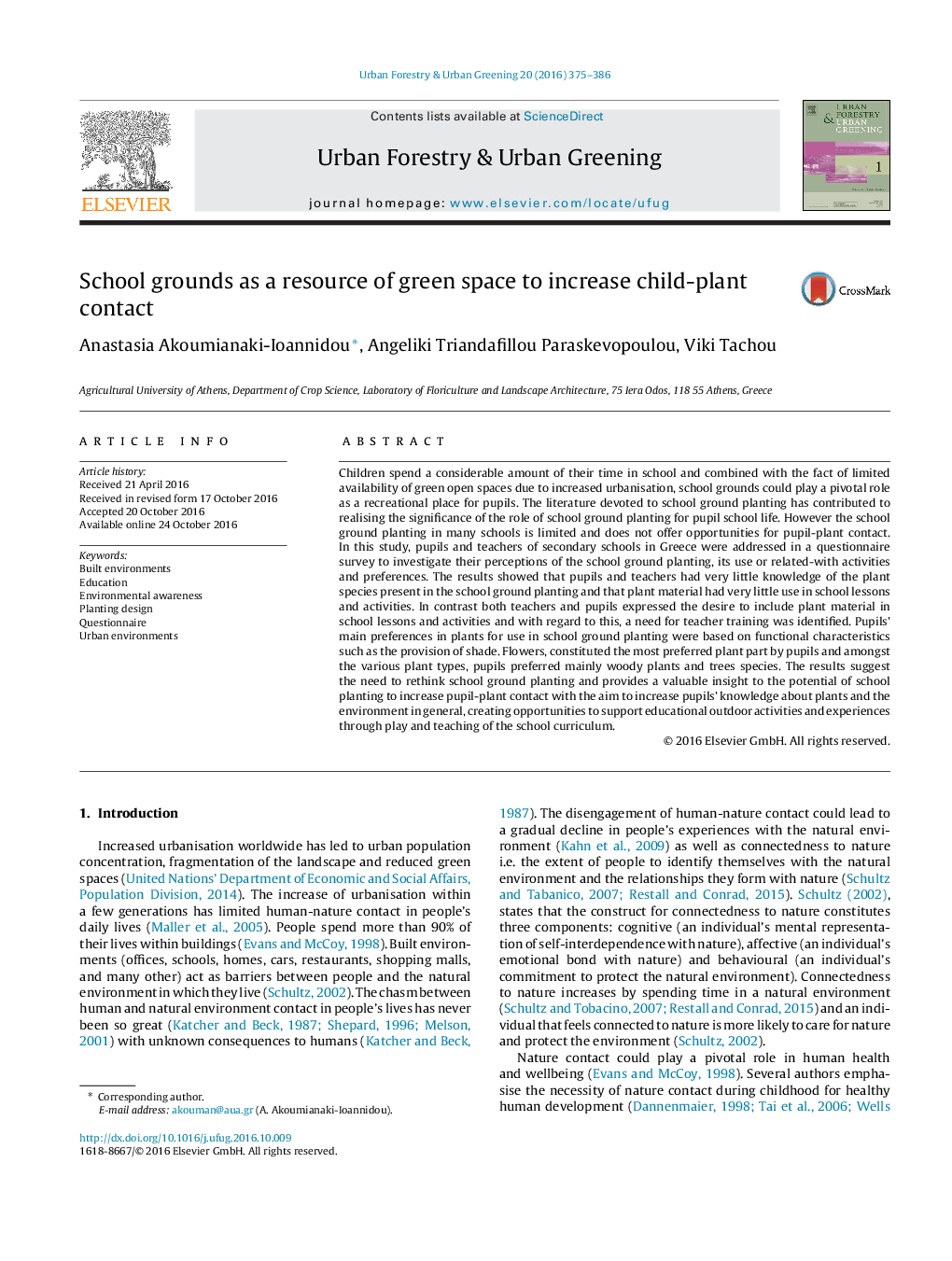| Article ID | Journal | Published Year | Pages | File Type |
|---|---|---|---|---|
| 6461973 | Urban Forestry & Urban Greening | 2016 | 12 Pages |
Children spend a considerable amount of their time in school and combined with the fact of limited availability of green open spaces due to increased urbanisation, school grounds could play a pivotal role as a recreational place for pupils. The literature devoted to school ground planting has contributed to realising the significance of the role of school ground planting for pupil school life. However the school ground planting in many schools is limited and does not offer opportunities for pupil-plant contact. In this study, pupils and teachers of secondary schools in Greece were addressed in a questionnaire survey to investigate their perceptions of the school ground planting, its use or related-with activities and preferences. The results showed that pupils and teachers had very little knowledge of the plant species present in the school ground planting and that plant material had very little use in school lessons and activities. In contrast both teachers and pupils expressed the desire to include plant material in school lessons and activities and with regard to this, a need for teacher training was identified. Pupils' main preferences in plants for use in school ground planting were based on functional characteristics such as the provision of shade. Flowers, constituted the most preferred plant part by pupils and amongst the various plant types, pupils preferred mainly woody plants and trees species. The results suggest the need to rethink school ground planting and provides a valuable insight to the potential of school planting to increase pupil-plant contact with the aim to increase pupils' knowledge about plants and the environment in general, creating opportunities to support educational outdoor activities and experiences through play and teaching of the school curriculum.
